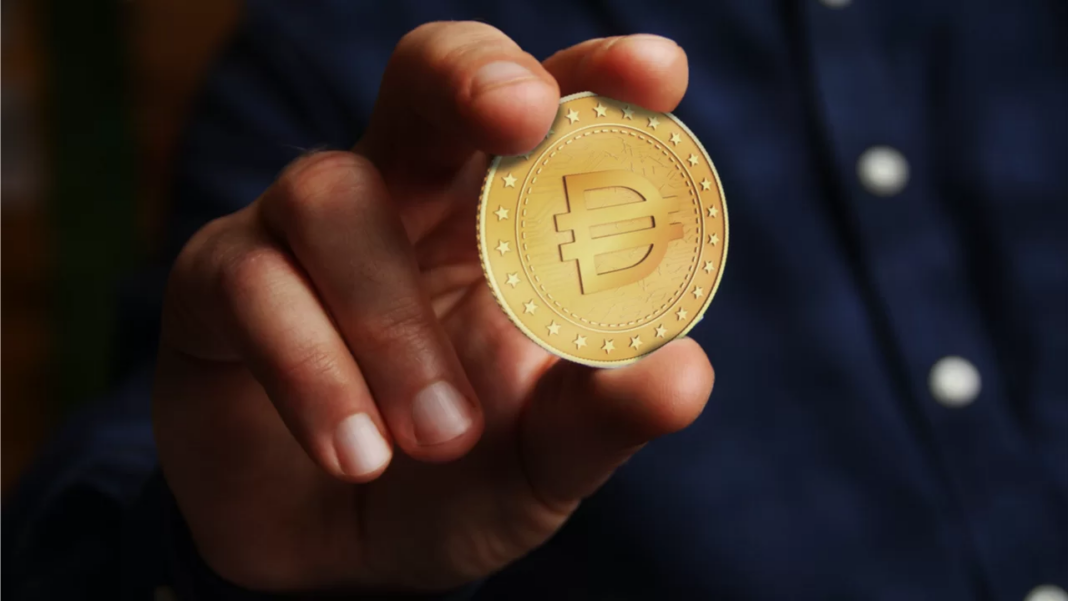Dai (DAI) is recognized as the initial decentralized, collateral-backed stable cryptocurrency.
Functioning as an ERC-20 token, DAI endeavors to sustain a stable 1:1 value ratio with the U.S. dollar through the utilization of other crypto assets locked in smart contracts.
In contrast to conventional stablecoins controlled by a central authority, DAI operates as the native token of the Maker Protocol. This protocol constitutes a decentralized autonomous ecosystem of smart contracts functioning on the Ethereum blockchain.
Collateralized loans offer a means for lenders to secure loans by locking their owned assets.
Typically, these loans feature lower interest rates compared to unsecured loans because the locked assets can be liquidated to partially fulfill the loan obligation.
How Does Dai (DAI) Work?
Dai (DAI) serves as a pivotal element within the framework of Collateralized Debt Positions (CDPs).
CDPs represent the smart contracts integrated into the Maker Protocol, enabling users to lock their collateral assets (such as ETH, BAT, etc.) and generate DAI.
A helpful analogy for understanding CDPs is to envision them as secure vaults utilized for locking collateral while retaining the capability to access liquid, stable crypto-cash.
Given the volatile nature of the collateralized assets, DAI is often over-collateralized to mitigate the risk of liquidation.
For instance, users may need to deposit $200 worth of ETH to obtain $100 DAI, providing a buffer against volatility. Consequently, even if the price of ETH drops by 25%, the $100 DAI loan would remain adequately covered by $150 worth of ETH.
To retrieve their collateralized assets, users must repay the borrowed DAI along with an additional fee.
Why use DAI?
Users may find DAI appealing due to its efficiency and transparency, typical of cryptocurrencies. Additionally, it can serve as a convenient option for holding funds while anticipating volatility in other crypto assets.
Moreover, akin to other cryptocurrencies, stablecoins like DAI offer borderless transactions, programmability, and low-cost transfers. This positions stablecoins as a valuable alternative to traditional banking institutions.
For Kraken users, DAI presents an accessible option. They can swiftly transfer DAI to their accounts and seamlessly exchange it for other cryptocurrencies.
The Advantage of DAI
Price Stability
DAI can function as a secure alternative store of value, particularly beneficial for individuals residing in regions with unstable economies. In such contexts, where local currencies may be prone to volatility or inflation, DAI offers stability and reliability.
Furthermore, DAI can contribute to financial inclusion by providing access to a stable currency for individuals who may face challenges accessing traditional banking services or stable currencies. This access empowers individuals to participate in global financial networks and facilitates transactions, savings, and investments without being hindered by local economic instability.
No Minimum Amount Required
Unlike most other forms of currency, DAI doesn’t mandate a minimum account balance for usage. This sets it apart from traditional banking systems, where meeting minimum balance requirements is often necessary to qualify for an account. Many individuals worldwide lack the assets needed to fulfill these requirements, making traditional banking inaccessible. However, with DAI, there’s no minimum balance requirement, ensuring accessibility for all.
Users have the opportunity to generate income using DAI tokens through a lockup and interest generation mechanism offered by the DAI Savings Rate system. Since DAI operates on the Ethereum blockchain, it lacks its own staking mechanism.
However, DAI token holders can earn profits by depositing their DAI into a MakerDAO smart contract. This innovative smart contract system safeguards the user’s funds while enabling instant withdrawals when needed.
The MakerDAO system prioritizes security by conducting meticulous checks and studies to ensure the platform’s integrity. Developers subject all smart contracts and core protocol elements constituting the system’s internal architecture to formal validation through mathematical analysis. It’s essential to adhere to the principle of DYOR (Do Your Own Research) and thoroughly comprehend any DeFi protocol before engaging with it.


